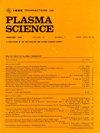等离子体增强条件生成流诱导变分自编码器
IF 1.5
4区 物理与天体物理
Q3 PHYSICS, FLUIDS & PLASMAS
引用次数: 0
摘要
在本文中,我们提出了一种新的条件生成流诱导变分自编码器(CGlow-VAE)模型来解决等离子体实例中小样本问题的关键挑战。该方法将变分推理与条件生成流相结合,建立了高维数据与其相应标签之间的双向映射。具体来说,编码器网络将输入数据映射到一个结构化的潜在分布,而条件生成流模块通过一系列可逆变换系统地优化观察到的标签的对数似然,将它们视为条件变量。该过程有效地捕获了等离子体特性与测量输出之间复杂的非线性耦合。基于该框架,解码器对输入数据进行重构,保证生成的数据与原始数据保持分布一致性。然后使用经过训练的条件流反向生成相应的标签数据。为了评估我们提出的方法的有效性,我们使用等离子体闪光成像数据集和光学发射光谱(OES)数据集进行了综合实验评估。此外,我们将我们的方法与现有的最先进的方法进行比较,以确保进行彻底的性能评估。结果表明,本文提出的CGlow-VAE在样本生成方面取得了显著的改进,同时通过数据增强有效地缓解了小样本问题,从而增强了模型的可泛化性。本文章由计算机程序翻译,如有差异,请以英文原文为准。
Conditional Generative Flow-Induced Variational Autoencoder for Plasma Instances Augmentation
In this article, we propose a novel conditional generative flow-induced variational autoencoder (CGlow-VAE) model to address the critical challenge of the small sample issue in plasma instances. This approach integrates variational inference with conditional generative flow, establishing a bidirectional mapping between high-dimensional data and their corresponding labels. Specifically, the encoder network maps the input data to a structured latent distribution, while the conditional generative flow module systematically optimizes the log-likelihood of the observed labels through a series of invertible transformations, treating them as conditional variables. This process effectively captures the complex nonlinear coupling between plasma characteristics and measurement outputs. Based on this framework, the decoder reconstructs input data, ensuring that the generated data maintains distributional consistency with the original data. The trained conditional flow is then used to reverse-generate the corresponding label data. To evaluate the effectiveness of our proposed method, we conducted a comprehensive experimental assessment using the plasma flash imaging dataset and the optical emission spectroscopy (OES) dataset. In addition, we compared our approach against existing state-of-the-art methods to ensure a thorough performance evaluation. The results demonstrate that the proposed CGlow-VAE achieves significant improvements in sample generation while effectively mitigating the issue of small samples through data augmentation, thus enhancing the generalizability of the model.
求助全文
通过发布文献求助,成功后即可免费获取论文全文。
去求助
来源期刊

IEEE Transactions on Plasma Science
物理-物理:流体与等离子体
CiteScore
3.00
自引率
20.00%
发文量
538
审稿时长
3.8 months
期刊介绍:
The scope covers all aspects of the theory and application of plasma science. It includes the following areas: magnetohydrodynamics; thermionics and plasma diodes; basic plasma phenomena; gaseous electronics; microwave/plasma interaction; electron, ion, and plasma sources; space plasmas; intense electron and ion beams; laser-plasma interactions; plasma diagnostics; plasma chemistry and processing; solid-state plasmas; plasma heating; plasma for controlled fusion research; high energy density plasmas; industrial/commercial applications of plasma physics; plasma waves and instabilities; and high power microwave and submillimeter wave generation.
 求助内容:
求助内容: 应助结果提醒方式:
应助结果提醒方式:


